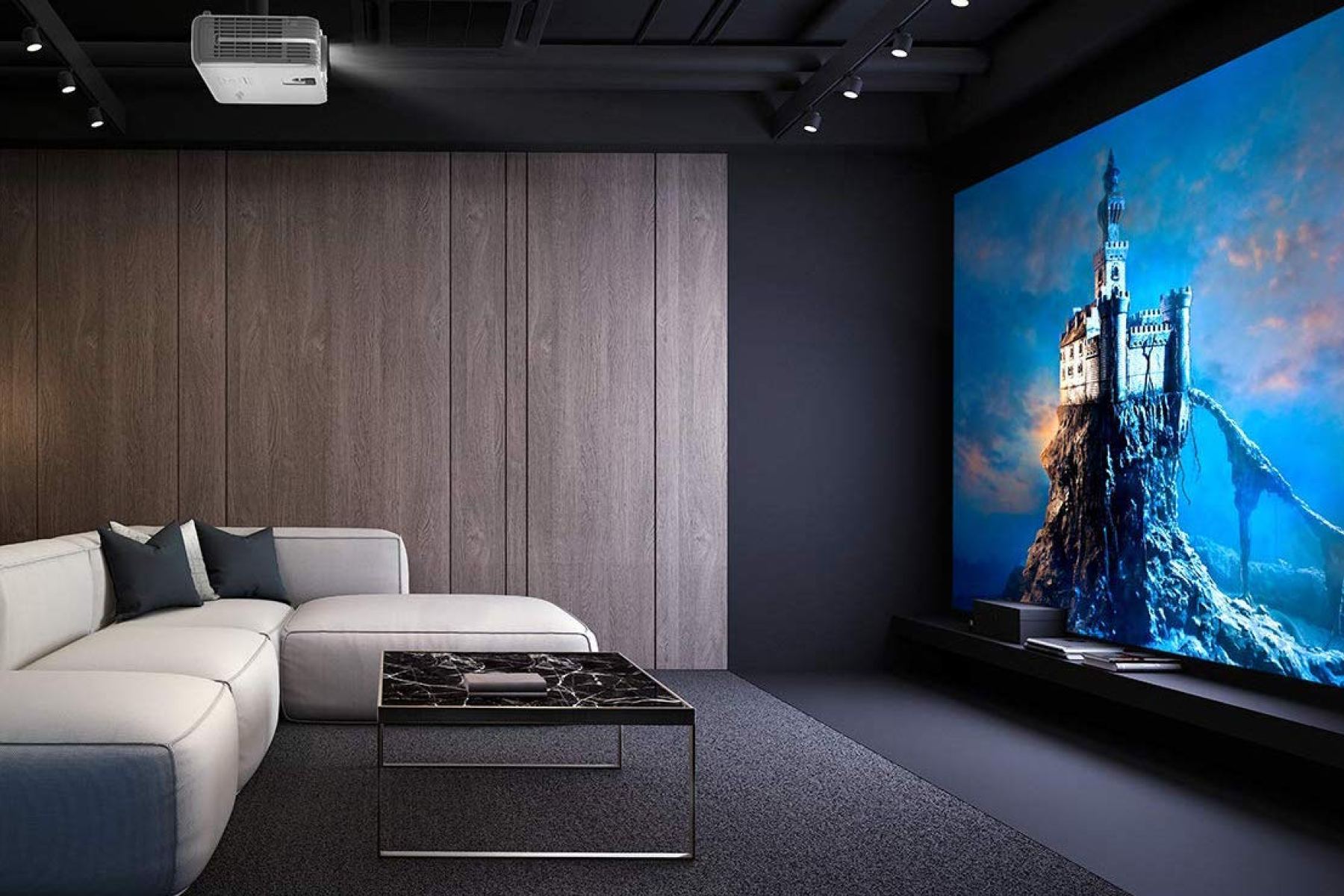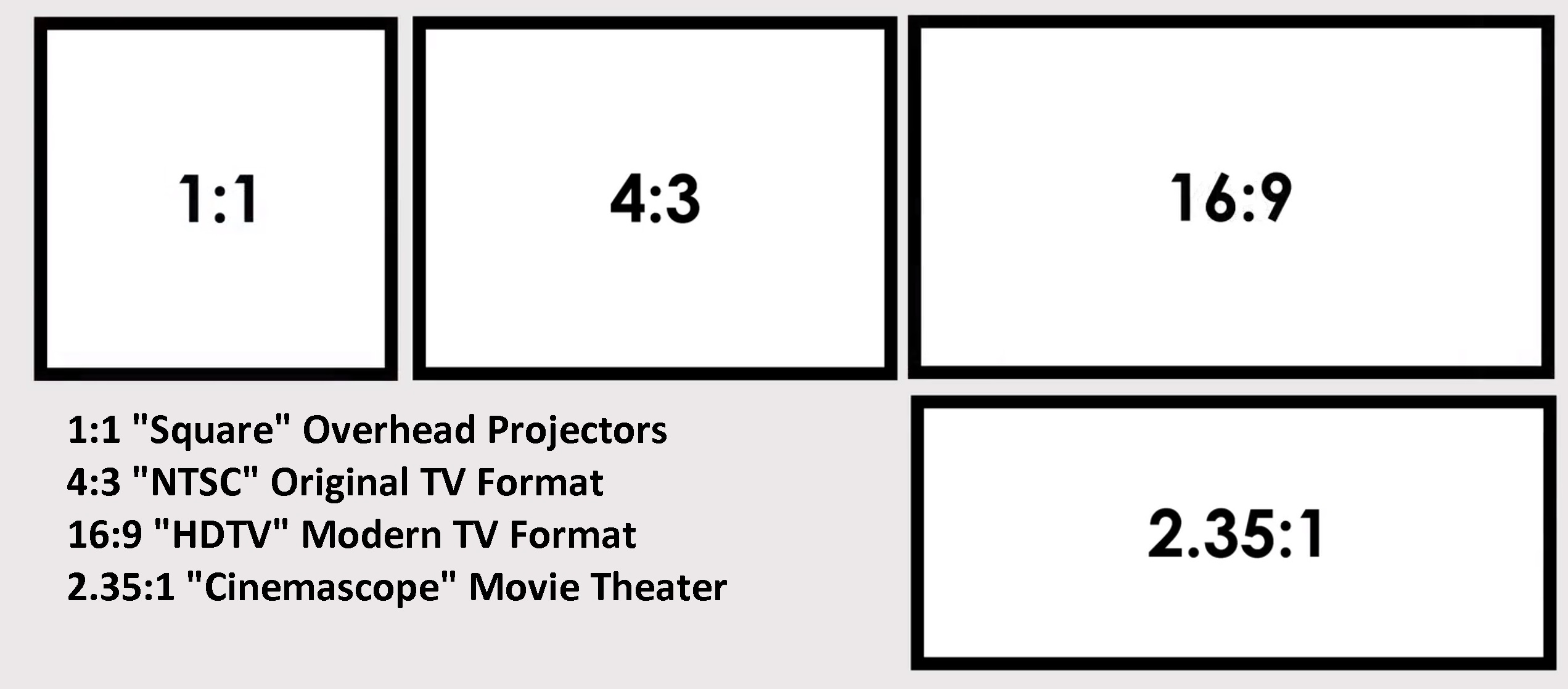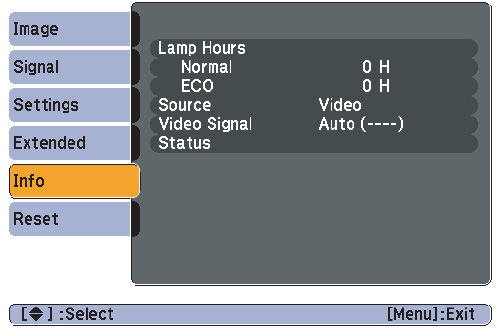Guide For Buying Home Theater Projectors
A Movie Theater for Every Family Room
Buying a home theater projector can seem daunting. At any given time, there are many models to choose from, each with its own unique benefits and downsides and each proclaiming itself to be the “right” one. The key to simplifying the process is determining what you need and then finding projectors that fit your criteria. Projectors provide the ultimate home theater experience. Nothing else comes as close to truly re-creating the viewing experience of a movie theater. We often talk about how a bigger screen is the most impactful upgrade for TVs. Projectors make it possible to enjoy images that are much larger than even the biggest TVs offer. A projector is really a two-piece system: the projector and the screen. Today’s digital projectors are a snap to set up and use. Many models are compact and lightweight enough to be considered portable.
Aspect Ratio You Want
When we talk about 4:3 and 16:9 formats, we’re talking about the rectangular shape of the video image, or what is called its aspect ratio. A standard TV has an aspect ratio of 4:3. That means the picture is four units wide for every three units of height. The HDTV standard is 16:9, which is 16 units of width for every 9 units of height. So HDTV’s 16:9 is horizontally wider than regular TV, which by comparison looks almost square.
Any given projector or TV comes in its own native format–typically 16:9 these days. On the other hand, movies and video come in many different aspect ratios.
The most popular choice for a home theater system is to go with a 16:9 projector and a 16:9 screen. But some people still like the more classic format of a 4:3 projector with a 4:3 screen, since all classic films prior to 1953 were made in this format. There is also a lot of interest in dedicated super-widescreen 2.35:1 systems as well. Each of these three configurations offer some unique benefits as well as some disadvantages that should be considered before taking the plunge.
Resolution
The number of pixels on the imaging chip measured from side to side and top to bottom. Nearly all high-definition projectors made for home theater use are full HD 1080p — 1920 x 1080 pixels. We now carry some 4K Ultra HD projectors with 4096 x 2160-pixel resolution — over four times the detail of full HD.
As the resolution gets higher, the size of each pixel gets smaller, so that images look more seamless, with less noticeable “pixel structure.” A projector’s built-in scaler will upconvert or down convert all incoming signals to precisely match its “native resolution.”
A few manufacturers make “pixel-shifting” 1080p projectors that provide compatibility with 4K video sources. The picture doesn’t have the same quality as a native 4K projector but definitely looks sharper than 1080p.
Lamp Life
LCD and DLP projectors typically have a lamp life between 2000-4000 hours. This specification is actually referring to the ‘half-life’ of the lamp, the point where the lamp is half as bright as it was new. The lamp will still work at its half-life, but it will continue to gradually lose brightness. Longer lamp life means less expense in maintaining your projector.
If you are planning to use your projector to replace your current television, lamp replacement cost should be factored into your purchase. If your projector will be used primarily for watching movies and special events, lamp life won’t be as important.
- Lamps typically last between 2000-4000 hours.
- Replacement lamps cost $200-$400.
- Regular filter cleaning and proper operation will improve lamp life.
- The average projector used for movies and special events runs 8 hours a week. At this rate, the lamp will last approximately 4.8 years.
Ceiling Mounting Projector
Ceiling mounting your projector will get it out of the way, creating a more polished look for your viewing area while also keeping your projector secure. Mounting the projector in a fixed area will also save you the time of setting up your projector for each use.
If you plan to ceiling mount your projector, you will need to know the fixed distance between the projector and your screen. This is because different projectors have different throw ratios. Throw ratio is the relationship between the projector’s distance from the screen and the width of the image. For example, if your projector will be ceiling mounted 10 feet away from your screen, your image will be larger than if your projector is only five feet away.
Table Top Projector
Most video projectors weigh less than 20 pounds and are easy to transport from location to location. That means you can take your ‘big screen TV’ with you to the homes of friends and family, or host an outdoor movie projected on the garage door without any heavy lifting. However, you will have to set up your projector for each use, and your primary viewing area will not have the polished look of an installation. If you decide that tabletop projection is right for you, consider a projector with less fan noise. Aim for around 30dB or less for ‘whisper quiet’ fans. You may also want to consider the overall product’s exterior design since the projector will be visible.
We’d love To Meet You In Person Or Via The Web!
Main Office: Suite M-01, 512, 3rd Street, Abu Dhabi, UAE
Phone: + 971 2 6767019
WhatsApp: + 971 55 3979668
Email: web@OfficePlusUAE.com






